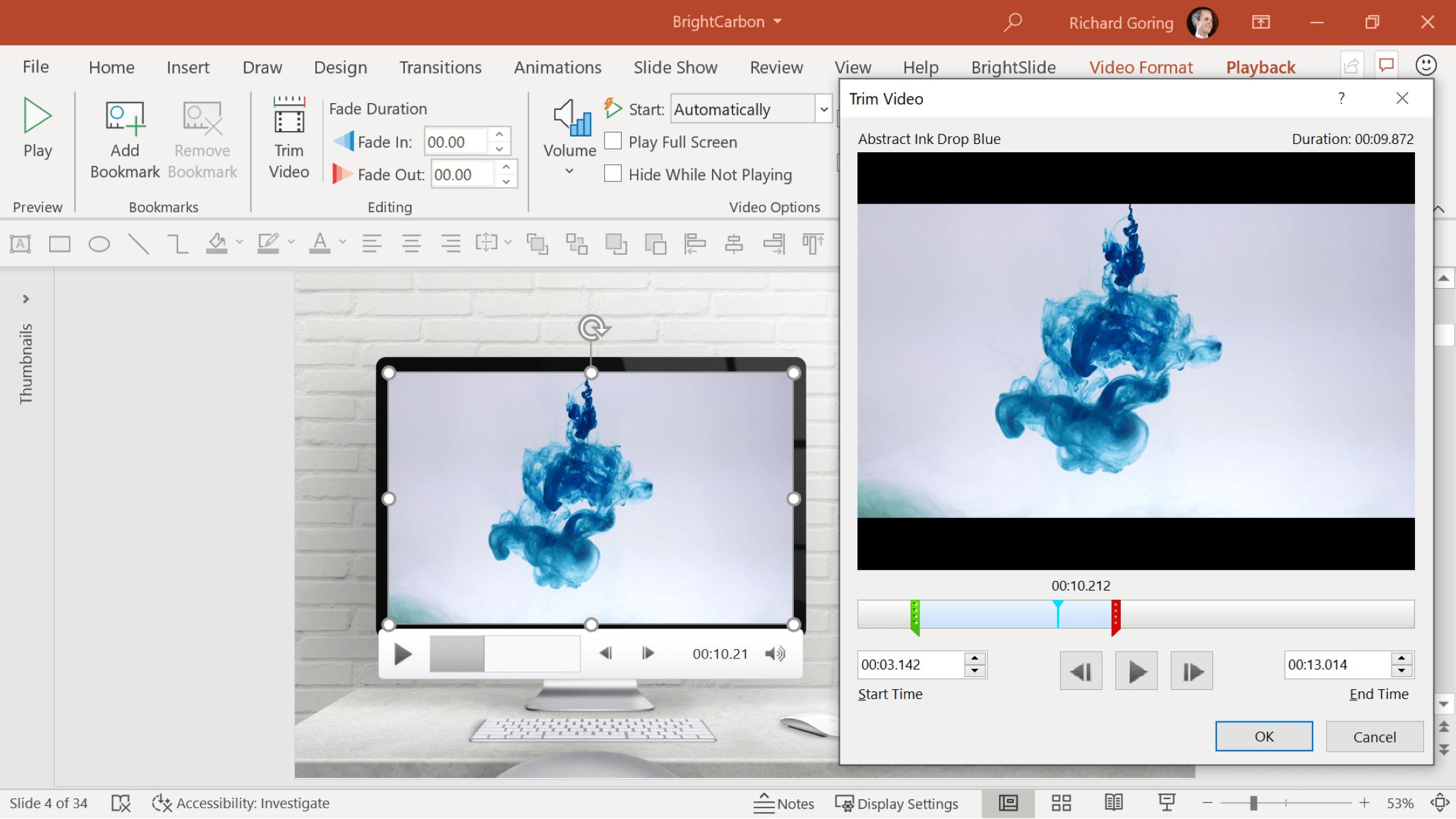Home>Production & Technology>Background Music>How To Play Background Music On Guitar


Background Music
How To Play Background Music On Guitar
Modified: February 15, 2024
Learn how to play background music on guitar and create captivating melodies with our easy step-by-step guide. Enhance your guitar skills and add depth to your music.
(Many of the links in this article redirect to a specific reviewed product. Your purchase of these products through affiliate links helps to generate commission for AudioLover.com, at no extra cost. Learn more)
Table of Contents
- Introduction
- Choosing the right guitar
- Selecting the appropriate background music
- Basic guitar playing techniques
- Strumming patterns for background music
- Chord progressions for different moods
- Incorporating melodies into your background music
- Creating a seamless transition between chords
- Adding embellishments and fills
- Tips for playing background music effectively
- Conclusion
Introduction
Welcome to the world of background music on guitar! Whether you are a beginner or an experienced player, adding a delightful melody to any setting can create the perfect ambiance and atmosphere. Playing background music on the guitar allows you to set the tone and enhance the mood of any space, whether it’s a cozy living room, a relaxed cafe, or even a special event.
Background music on the guitar has the power to captivate listeners and create an immersive experience. It can be soothing, uplifting, or even melancholic, depending on the genre and style you choose. With the right techniques and selection of music, you can effortlessly bring your audience into a world of emotions.
In this article, we will explore everything you need to know about playing background music on the guitar. From choosing the right guitar to selecting the perfect music and mastering essential techniques, we’ll cover it all. Whether you aspire to be a professional musician or simply want to impress your friends and loved ones, this guide will equip you with the necessary skills to create beautiful background music.
Before we dive into the technical aspects, it’s important to understand that playing background music is not just about skill; it’s also about storytelling and connecting with your audience. The magic lies in creating an immersive experience that allows listeners to relax, unwind, or simply enjoy the moment.
So, whether you enjoy playing soft, acoustic melodies or prefer grooving to the rhythms of jazz or blues, get ready to embark on a musical journey that will elevate your guitar playing to new heights.
Choosing the right guitar
When it comes to playing background music on the guitar, selecting the right instrument is crucial. The guitar you choose will significantly impact the tonality, sound quality, and overall experience. Here are a few factors to consider when choosing the right guitar for your background music endeavors:
- Acoustic or electric? The first decision to make is whether you prefer an acoustic or electric guitar. Acoustic guitars are known for their warm, natural sound and are well-suited for genres like folk, country, and classical music. On the other hand, electric guitars offer more versatility and can produce a wider range of tones, making them suitable for genres like jazz, blues, and rock.
- Body type and size: The body type and size of the guitar also play a role in the kind of background music you can create. For instance, a smaller-bodied guitar, such as a parlor or concert size, may be more comfortable for fingerpicking and delicate melodies, while a larger-bodied guitar, like a dreadnought, can produce a fuller sound for strumming and chord-based playing.
- Tone woods: The choice of tonewoods used in the construction of the guitar can greatly impact its sound. Spruce is a popular choice for the top (soundboard) of acoustic guitars, as it offers a balanced and versatile tone. Mahogany, on the other hand, is known for its warm, rich sound. Experimenting with different tonewoods can help you find the right guitar with the desired tonal qualities for your background music.
- Your playing style: Consider your playing style and the type of music you intend to play as these factors will influence the feel and sound you are looking for. Some guitars have a brighter, more articulate sound, while others have a mellower tone. Exploring different guitars and playing styles can help you find a guitar that complements your musical preferences.
- Budget: Of course, your budget is an important consideration when choosing a guitar. Set a realistic budget and explore options within that range. Remember that while expensive guitars may offer superior craftsmanship and materials, there are many affordable options that can still deliver excellent sound and playability.
Ultimately, choosing the right guitar for playing background music is a personal decision that depends on your preferences, style, and budget. Take the time to try out different guitars, consult with knowledgeable professionals, and consider the factors mentioned above to find the perfect instrument that will inspire your musical journey.
Selecting the appropriate background music
Once you have chosen the right guitar, the next step in creating captivating background music is selecting the appropriate music itself. The choice of music greatly depends on the setting, atmosphere, and mood you want to create. Here are some tips to help you select the perfect background music:
- Consider the setting: Think about the venue or environment where you will be playing the background music. Is it a relaxed café, an intimate gathering, or a lively event? The music should complement the ambiance and enhance the overall experience. For example, if you are playing at a romantic dinner, soft and melodic tunes may be more suitable, while upbeat and energetic tracks might work better in a social setting.
- Connect with your audience: Understanding your audience is essential when selecting background music. Consider the demographics, preferences, and cultural background of the listeners. For instance, if you know that your audience enjoys jazz or classical music, tailor your selection accordingly. Additionally, paying attention to the reactions and feedback of your audience can guide you in refining your playlist and keeping them engaged.
- Vary the genres and styles: To keep your background music fresh and interesting, explore a variety of genres and styles. While it’s great to have a signature sound, incorporating different genres can add depth and versatility to your performance. Experiment with genres like jazz, blues, folk, classical, pop, or even world music to create a diverse and engaging playlist.
- Create a cohesive playlist: When selecting background music, think about the flow and coherence of your playlist. Consider the transitions between songs and how they complement one another. Avoid abrupt shifts in style or tempo unless intentional for a specific effect. Smooth transitions can create a seamless and immersive listening experience.
- Balance between familiarity and originality: Striking a balance between familiar tunes and original compositions is important. Familiar songs can evoke nostalgia and comfort while original compositions can showcase your creativity and artistry. This balance ensures that your background music is both recognizable and unique.
- Experiment and evolve: Don’t be afraid to experiment and evolve your playlist over time. As you gain experience and explore new musical territories, your selection of background music may naturally evolve as well. Stay open to discovering new tracks, artists, and genres to keep your performances fresh and captivating.
Remember, the key to selecting the appropriate background music is to create an atmosphere that enhances the overall experience of your audience. By considering the setting, connecting with your audience, varying genres and styles, and creating a cohesive playlist, you can curate the perfect musical backdrop for any occasion.
Basic guitar playing techniques
Before diving into playing background music on the guitar, it’s important to have a solid understanding of basic playing techniques. These techniques will serve as the foundation for your musical journey and allow you to express yourself creatively. Here are some essential techniques to master:
- Proper finger placement: Start by familiarizing yourself with the correct finger placement on the fretboard. Each finger is assigned to a specific fret (fingers 1-4 correspond to frets 1-4), and it’s crucial to place your fingers close to the frets for optimal sound and clarity.
- Fretting notes: To produce clear and concise notes, apply firm pressure behind the fret with your fingertips. Make sure the strings are pressed down firmly against the fretboard to avoid any buzzing or muted sounds.
- Strumming: Strumming is a fundamental technique used to produce chords and rhythm. Hold the pick between your thumb and index finger and brush across the strings using a controlled motion. Aim for consistent downstrokes and upstrokes to maintain a steady rhythm.
- Fingerpicking: Fingerpicking involves plucking individual strings with your fingers instead of using a pick. This technique allows you to create intricate melodies and add texture to your background music. Start by assigning each finger (thumb, index, middle, ring) to a specific string and practice plucking patterns to develop dexterity and accuracy.
- Strumming and fingerpicking patterns: Explore various strumming and fingerpicking patterns to add depth and dynamics to your playing. Experiment with different patterns like alternating bass notes, arpeggios, and rhythmic variations to keep your background music interesting and engaging.
- Open and barre chords: Chords are the building blocks of music. Start with open chords, which use open strings combined with fretted notes, and practice transitioning between them smoothly. Once you feel comfortable, move on to barre chords, which involve using one finger to fret multiple strings. Barre chords allow you to play chords in any key and expand your repertoire.
- Strumming hand dynamics: It’s important to develop control and dynamics in your strumming hand. Experiment with different strumming intensities, from soft and gentle to strong and powerful, to create contrasting dynamics in your background music. This will add depth and emotion to your playing.
Remember, mastering these basic guitar techniques takes time and practice. Start with simple exercises and gradually increase the complexity as you become more comfortable. Regular practice, along with patience and dedication, will help you develop the necessary skills to play background music on the guitar with confidence and expressiveness.
Strumming patterns for background music
One of the key elements in creating a rhythmic and engaging background music on the guitar is mastering various strumming patterns. Strumming patterns add texture and groove to your playing, allowing you to create a solid foundation for your musical backdrop. Here are a few essential strumming patterns to start with:
- Downstrokes: The simplest strumming pattern involves playing downstrokes on each beat. This creates a consistent and straightforward rhythm that works well for many genres. Start by strumming downward with your thumb or pick across all the strings, maintaining a consistent tempo.
- Upstrokes: Incorporating upstrokes into your strumming pattern adds variety and dynamics. After each downstroke, follow it with an upstroke, strumming upward across the strings. This creates a more intricate rhythm and allows you to accent certain beats or emphasize certain notes.
- Down-Up Strum: Another common strumming pattern involves alternating between downstrokes and upstrokes. This pattern adds a sense of groove and flow to your playing. Start with a downstroke, followed by an upstroke, and repeat this motion continuously. Practice maintaining a steady tempo and keeping the strumming consistent.
- Syncopated strumming: To add a more complex and syncopated feel to your background music, experiment with offbeat strumming patterns. Instead of strumming on the downbeats, accent the upbeats by incorporating upstrokes or partial strums. This can create a lively and energetic rhythm that adds interest to your playing.
- Arpeggios: Arpeggios involve playing the individual notes of a chord in a sequential pattern rather than strumming across all the strings at once. This technique is particularly effective for creating delicate and melodic background music. Start by fingerpicking the notes of a chord one string at a time, either in a descending or ascending pattern.
- Muted strumming: Muted strumming adds percussive element and rhythm to your playing. By lightly resting the side of your palm against the strings near the bridge, you can create a muted or “chopped” sound. Combine this technique with various strumming patterns for a unique and rhythmic effect in your background music.
Remember, when practicing strumming patterns, start slowly and gradually increase the tempo as you become comfortable. Focus on maintaining consistent rhythm and accuracy. Additionally, don’t shy away from experimenting with different patterns and incorporating your own variations. Strumming patterns are a versatile tool, allowing you to tailor your background music to the specific mood and atmosphere you wish to create.
Chord progressions for different moods
Chord progressions play a significant role in setting the mood and emotional tone of your background music. By choosing the right chord progressions, you can create the desired atmosphere and evoke specific emotions in your listeners. Here are some chord progressions for different moods:
- Mellow and relaxing: For a calming and soothing background music, consider using chord progressions that emphasize major 7th or minor 7th chords. These types of chords have a smooth and dreamy quality that can create a serene and laid-back atmosphere. Experiment with progressions like Cmaj7 – Am7 – Fmaj7 – G7 or Em7 – Dmaj7 – Am7 – Bm7. These progressions are commonly found in jazz and soft pop music.
- Uplifting and optimistic: To create a sense of positivity and optimism in your background music, incorporate major chords and progressions that have a bright, cheerful sound. Progressions like C – G – Am – F or D – A – Bm – G are popular choices for uplifting and catchy melodies. These progressions often appear in pop, rock, and folk music, and can instantly lift the mood and create a feel-good atmosphere.
- Melancholic and reflective: If you want to evoke a sense of introspection and melancholy in your background music, minor chords and progressions can help achieve that mood. Progressions like Am – Em – F – G or Dm – C – G – Am have a somber and contemplative quality. These progressions can be found in genres like blues, folk, and ballads, and are perfect for creating a reflective and emotional ambiance.
- Jazzy and sophisticated: Jazz chord progressions can add a touch of sophistication and elegance to your background music. Seventh chords, extended chords, and altered chords are commonly used in jazz progressions. Try progressions like ii-V-I (Dm7 – G7 – Cmaj7) or ii-V-I with substitutions (Bm7b5 – E7 – Am7) to create a jazzy and captivating vibe. These progressions are often found in jazz standards and can add a sense of complexity and sophistication to your playing.
- Dynamic and adventurous: To create a sense of energy and adventure in your background music, try incorporating more complex chord progressions with modal interchange or borrowed chords. Progressions like Am – G – D – F or C – G/B – Am – F/C can introduce unexpected twists and turns, creating a sense of excitement and exploration. These progressions are commonly found in rock, pop, and progressive music.
Remember, the choice of chord progressions for your background music depends on the mood and atmosphere you want to create. Don’t be afraid to experiment with different progressions, add variations, or even create your own progressions. By understanding the emotional impact of chord progressions, you can tailor your playing to evoke the desired emotions and enhance the overall experience for your listeners.
Incorporating melodies into your background music
While chords provide the foundation for your background music, incorporating melodies can elevate your playing and add a captivating element to the overall sound. Melodies can evoke emotions, create hooks, and engage listeners on a deeper level. Here are some tips for incorporating melodies into your background music:
- Explore the fretboard: Familiarize yourself with the different positions and ranges of the guitar fretboard. This will allow you to access a wide range of notes and create melodic phrases in various octaves. Experiment with playing melodies on different strings and explore different areas of the guitar neck.
- Improvise: Improvisation is an excellent way to generate melodies on the spot. By trusting your musical instincts and exploring different scales and patterns, you can create unique and spontaneous melodies that perfectly complement the background music. Practice improvisation over chord progressions and learn to navigate the fretboard freely.
- Utilize scale patterns: Learning scale patterns and understanding scales such as major, minor, pentatonic, and blues scales can greatly aid in creating melodic phrases. By utilizing these patterns, you can effortlessly navigate through different notes and create harmonious melodies that capture the essence of your background music.
- Experiment with ornamentation: Adding ornamentation, such as slides, bends, hammer-ons, and pull-offs, can infuse your melodies with personality and expression. These techniques can help you create tasteful embellishments and add a sense of dynamism and character to your background music.
- Consider dynamics and phrasing: Pay attention to the dynamics and phrasing of your melodies. Experiment with playing certain notes louder or softer, emphasizing certain beats or notes, and incorporating pauses for dramatic effect. These nuances in dynamics and phrasing can make your melodies more interesting and captivating.
- Listen to other melodies for inspiration: Take the time to listen to different genres of music and pay attention to the melodies that captivate you. Study the melodies of your favorite songs and analyze how they are constructed. This can inspire you to create your own unique melodies and develop your musical style.
- Evoke emotions: Consider the mood and atmosphere you want to create with your background music. Think about the emotions you want to evoke in your listeners. Tailor your melodies to reflect those emotions, whether it be joy, serenity, longing, or excitement. The melodies should align with the overall mood and enhance the experience for your audience.
Remember, incorporating melodies into your background music is an opportunity to showcase your creativity and connect with your audience. By exploring the fretboard, improvising, utilizing scale patterns, experimenting with ornamentation, considering dynamics and phrasing, and seeking inspiration from other melodies, you can create captivating and memorable melodies that enhance the impact of your background music.
Creating a seamless transition between chords
One of the keys to playing background music on the guitar is being able to smoothly transition between chords. Seamless chord changes contribute to the overall flow and coherence of your playing, creating a polished and professional sound. Here are some tips to help you achieve a seamless transition between chords:
- Finger placement and anticipation: As you approach a chord change, anticipate the upcoming shape and prepare your fingers in advance. This will help you execute the chord change with greater precision and speed. Practice transitioning between chords slowly at first, ensuring that each finger lands on the correct string and fret with minimal effort.
- Practice common chord progressions: Familiarize yourself with common chord progressions in the genres you wish to play. By practicing these progressions repeatedly, you will become more comfortable with the necessary chord changes. Start with simple progressions and gradually increase the complexity as your skills improve.
- Use common fingers as pivot points: Identify common fingers between chords that can remain in contact with the strings as you transition. These common fingers act as pivot points, providing stability and making it easier to move between chords. As you develop muscle memory, pivot points will become natural and automatic.
- Strumming through the chord change: To ensure a smooth transition, maintain a consistent strumming pattern throughout. As you change chords, continue the strumming motion even if your fingers are momentarily adjusting to the new chord shape. This helps maintain the rhythm and avoids any pauses or disruptions in the flow of your background music.
- Gradual chord changes: In certain situations, gradual chord changes can be effective for creating a smooth transition. This involves releasing one finger at a time while maintaining the rhythm and gradually shifting to the next chord. Practice this technique for chord progressions that require significant hand movement or complex finger placements.
- Slow down and practice: If you encounter difficulty with certain chord changes, slow down the tempo and practice the transition separately. Focus on the specific movement of each finger and ensure accuracy before gradually increasing the speed. With consistent practice, the motion will become more fluid, allowing for effortless chord changes.
- Develop finger strength and flexibility: Building finger strength and flexibility is crucial for smooth chord changes. Incorporate exercises that target finger dexterity, such as finger stretching and coordination drills. Additionally, regular finger strength exercises, such as finger push-ups or using hand grip strengtheners, can help improve your control and agility.
Remember, creating a seamless transition between chords requires patience, practice, and attention to detail. Be mindful of your finger placement, anticipate chord changes, practice common progressions, and use pivot points when possible. With time and dedication, you will develop the necessary skills to seamlessly transition between chords, allowing your background music to flow effortlessly with a professional and captivating sound.
Adding embellishments and fills
To add flair and creativity to your background music on the guitar, incorporating embellishments and fills can take your playing to the next level. Embellishments are small musical nuances that enhance your chords or melodies, while fills are short melodic passages that punctuate your playing. Here are some techniques to add embellishments and fills:
- Hammer-ons and pull-offs: Hammer-ons involve sounding a note by “hammering” a finger onto a higher fret without picking the string again, while pull-offs involve “pulling” a finger off a string to produce a lower note. These techniques create a smooth and fluid sound, adding ornamentation to your chords and melodies.
- Slides: Slides involve smoothly transitioning from one note to another by sliding your finger along the string. Slides can be applied to single notes or entire chords, adding a seamless and expressive touch to your playing. Experiment with sliding up or down the neck for different effects.
- Bends: Bending strings is a technique that alters the pitch of a note by bending the string upwards or downwards. This technique adds a touch of emotion and expression to your playing. Practice bending single notes or incorporate bends into your chord voicings to create unique and soulful sounds.
- Tapping: Tapping involves using the fingers of your picking hand to tap the fretboard and produce notes while your other hand frets chords or holds down sustain. This technique is commonly used in rock and metal genres, and can provide a percussive and melodic element to your background music.
- Chord inversions: Experiment with different chord inversions and voicings to create interesting and fresh sounds. By changing the order of the notes within a chord, you can add unique variations and textures to your chord progressions. This adds depth and complexity to your background music.
- Riffs and licks: Incorporating short riffs or licks into your playing adds melodic hooks and catchy phrases that can captivate your listeners. These can be repeated throughout your background music, creating recognizable motifs that enhance the overall musical experience. Experiment with creating your own riffs or learn existing ones to incorporate into your playing.
- Arpeggios and chord embellishments: Adding arpeggios or chord embellishments within your playing can create interest and movement. Arpeggios involve playing the individual notes of a chord in a sequential pattern, while chord embellishments can include adding suspensions, extensions, or inversions to your chords. These techniques can add complexity and variation to your background music.
When incorporating embellishments and fills, it’s important to strike a balance. Use them tastefully and in accordance with the mood and style of your background music. Remember to practice these techniques slowly at first, gradually increasing the speed as you become more comfortable. Over time, your ability to add embellishments and fills will become second nature, allowing you to add your own signature style and captivate your audience with unique and captivating guitar playing.
Tips for playing background music effectively
Playing background music on the guitar requires more than just technical skills. It’s about creating an immersive and engaging experience for your listeners. Here are some tips to help you play background music effectively:
- Be mindful of volume: Adjust the volume of your playing to suit the setting and purpose of the background music. Ensure that you strike the right balance so that your music can be enjoyed without overpowering conversations or activities happening around you.
- Pay attention to dynamics: Varying the dynamics in your playing adds depth and emotion to your background music. Experiment with playing softly for intimate moments and gradually increasing the volume for climactic sections. Doing so will create a more immersive and captivating listening experience.
- Watch your timing: Maintain a steady and consistent sense of timing throughout your playing. This will ensure that your background music remains steady and predictable, enabling your listeners to relax and connect with the music. Practice with a metronome to improve your sense of timing and internalize the rhythm.
- Engage with your audience: Connect with your listeners by making eye contact, smiling, and acknowledging their presence. This personal interaction can create a more intimate and enjoyable experience for both you and your audience. Look for cues to adjust the tempo, mood, or volume based on their reactions and engagement level.
- Consider the context: Tailor your background music to the specific context and atmosphere. Different venues and occasions may require different styles and genres of music. Adapt your playing to match the mood and expectations of the setting, ensuring that your music enhances the overall experience.
- Practice smooth transitions: Work on transitioning smoothly between songs and different sections within a song. Use appropriate segues, such as melodic interludes or chord progressions, to create seamless transitions. This allows the background music to flow effortlessly, without any abrupt changes that may disrupt the ambiance.
- Be versatile: Explore a wide variety of musical genres and styles to expand your repertoire and adapt to different audience preferences. Versatility allows you to cater to diverse settings and engage with a broader range of listeners. Keep adding new songs and techniques to your repertoire to keep your background music fresh and interesting.
- Stay in the background: Remember that the role of background music is to enhance the overall experience, not to distract or overpower. While your playing is essential, it should not dominate the space. Know when to take a step back and let the music serve as a subtle accompaniment to the atmosphere.
- Enjoy the process: Lastly, enjoy the journey of playing background music on the guitar. Infuse your own passion and love for music into your playing. When you’re genuinely enjoying yourself, your audience will be able to sense and appreciate the authenticity in your performance.
Approach playing background music as an opportunity to create a memorable and enjoyable experience. By being mindful of volume, dynamics, timing, and audience engagement, tailoring your playing to the context, practicing smooth transitions, being versatile, staying in the background, and most importantly, enjoying the process, you can effectively deliver background music that enhances any occasion and leaves a lasting impact on your listeners.
Conclusion
Congratulations! You’ve embarked on a journey to learn how to play background music on the guitar. Throughout this guide, we’ve explored various aspects of this art form, from choosing the right guitar to incorporating melodies and fills, and playing with seamless transitions. By incorporating these techniques and following the tips provided, you can elevate your guitar playing and create captivating background music that sets the perfect ambiance for any setting.
Remember, playing background music is not just about showcasing technical skills; it’s about creating an immersive experience for your audience. Pay attention to dynamics, timing, and engage with your listeners to create a personal connection. Adapt your playing to the context and atmosphere, and strive to strike the right balance between being present and letting the background music serve its purpose.
As with any musical journey, practice is key. Dedicate time to developing your skills, honing your techniques, and expanding your musical repertoire. Listen to a wide range of music for inspiration and study the playing styles of guitarists who excel at creating captivating background music.
Remember to enjoy the process and let your passion for music shine through in your playing. The more you embrace this artistic expression, the more effortlessly you will be able to create background music that resonates with your listeners.
So, pick up your guitar, have fun, and let the melodies flow. Whether you’re performing at a small gathering, a cozy café, or a special event, your background music on the guitar can create an unforgettable experience that leaves a lasting impression on your audience.











